Hallucinogens Uses, Types, Effects & Psychoactive Drugs List
Hallucinogens can temporarily alter a person’s mood, thoughts, and perceptions. Among other health effects and safety concerns, individuals who use these substances report feeling intense emotions ranging from bliss to fear and encountering profound changes in how they perceive reality. Continue reading more about the uses and status of hallucinogens in the US and why they are linked to substance use disorders.
By We Level Up | Editor Yamilla Francese | Clinically Reviewed By Lauren Barry, LMFT, MCAP, QS, Director of Quality Assurance | Editorial Policy | Research Policy | Last Updated: April 24, 2023
What are Hallucinogens?
Hallucinogens are psychoactive drugs that can alter a person’s perception, mood, and thought processes. Psychoactive drugs influence the brain and alter a person’s mood, perception, cognition, or behavior. Hallucinogens specifically alter a person’s perception and can cause them to experience sensory distortions, such as hearing or seeing things that, for other people, are not present.
The psychological effects of hallucinogens affect a person’s mood, causing euphoria, fear, or anxiety. The effects of hallucinogens on the brain are primarily due to their interaction with serotonin receptors, which significantly regulate mood, perception, and cognition. However, the exact mechanisms by which hallucinogens produce their effects are not fully understood and are subject to ongoing research. Nevertheless, hallucinogens can cause intense, unpredictable, and potentially dangerous effects on a person’s mental and physical health. Without proper guidance, individuals may not know how to navigate the experience or how to manage any negative effects of hallucinogens that may arise.
Types of Hallucinogens
Individuals with certain mental health conditions or medical conditions may be at higher risk for side effects of hallucinogens. Therefore, discussing the dangers and uses with a qualified healthcare provider before trying hallucinogens is crucial.
Most hallucinogenic drugs, such as DMT, Peyote, and shrooms, have no approved medical use in the United States. Still, licensed researchers can use them under a Schedule I research registration that requires DEA (Drug Enforcement Administration) and the FDA (Food and Drug Administration) approval. [2]
Hallucinogenic Drugs List & Picture of Hallucinogens
These drugs can cause changes in sensory experiences, including visual, auditory, and tactile hallucinations. Some common examples of hallucinogens drugs brainly include the following:
LSD (Lysergic Acid Diethylamide)
LSD is a powerful psychedelic drug that can cause profound changes in mood, perception, and thought processes. It is made from a chemical compound found in a fungus that grows on grains, such as rye. LSD is usually taken orally, either in the form of a tablet, a liquid, or on a small piece of paper that has been impregnated with the drug. The effects of LSD typically begin within 30-60 minutes after ingestion and can last for several hours, depending on the dose and individual sensitivity.
LSD works by altering serotonin levels, a neurotransmitter that plays a crucial part in regulating mood, perception, and cognition in the brain. The changes in serotonin levels can lead to alterations in mood and perception that may include feelings of euphoria. However, LSD can also lead to what is commonly called a “bad trip.”
LDS was categorized as a Schedule 1 controlled substance by the United Nations and currently has no approved medical uses. Due to the unpredictable effects of LSD, its use is illegal in most countries and can carry heavy legal consequences.
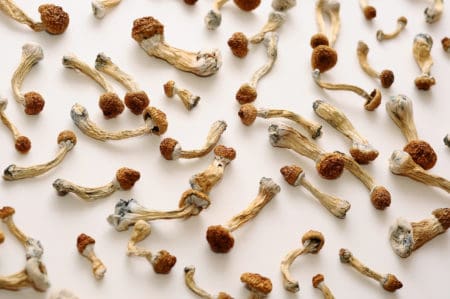
Peyote & Mescaline
Peyote is a cactus plant that contains the hallucinogen mescaline. The hallucinogenic cactus effects of Peyote can include the following:
- Visual and auditory hallucinations, such as seeing bright colors or hearing music.
- Changes in perception of time and space.
Peyote and mescaline are Schedule 1 substances under the Controlled Substances Act, meaning they have a high potential for addiction, no currently accepted medical use in treatment in the US, and a lack of accepted safety for utilization under medical supervision.
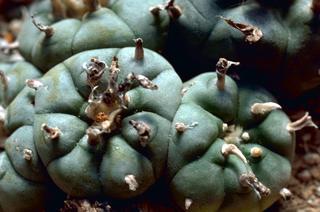
Ketamine
Ketamine is a dissociative anesthetic drug that can cause hallucinations and altered states of consciousness. When used therapeutically, ketamine is typically administered at lower doses than those used recreationally and may be used to treat depression and other mental health conditions. In this context, its dissociative and psychedelic effects may be used to help patients gain insight into their thoughts and emotions.
While ketamine can produce some hallucinogenic effects, its classification as a hallucinogen is somewhat contentious and depends on specific criteria.
Ketamine is a Schedule III substance. Schedule III drugs, which include codeine and anabolic steroids, have less potential for substance use disorder than Schedule I (heroin) or Schedule II (cocaine) drugs.
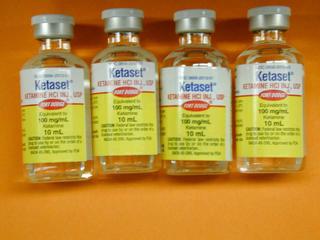
PCP Drug / Angel Dust Drug (Phencyclidine)
PCP (Phencyclidine) is a dissociative drug initially developed as a general anesthetic, but due to its severe side effects, it is no longer used for this purpose. It can be taken in several forms, including as a powder, pill, or liquid, and is typically smoked, snorted, or swallowed.
PCP is known to cause hallucinations, delusions, and other psychotic symptoms and can also have dangerous physical effects, such as seizures and high blood pressure.
PCP is considered a Schedule II drug under the US Controlled Substances Act, meaning it has a high potential for substance use disorder and may lead to severe physical or psychological dependency. Its use is illegal in most countries around the world.
Angel dust drug (PCP) is a highly addictive substance, and repeated use can lead to tolerance, dependence, and addiction.
Hallucinogenic Side Effects
Psychoactive drugs can produce a wide range of positive and negative short and long term effects of hallucinogens. Some of the typical side effects of hallucinogens include the following:
- Altered perceptions of time and space.
- Visual and auditory hallucinations.
- Changes in mood and emotional experience.
- Increased heart rate and blood pressure.
- Dilated pupils.
- Nausea and vomiting.
- Dizziness and disorientation.
- Sweating and chills.
- Loss of appetite.
While many people use hallucinogens for their potential therapeutic benefits, such as in treating depression, anxiety, and addiction, these drugs can also produce serious adverse effects, especially when misused or in high doses.
Some of the potential physical effects of hallucinogens risks and negative hallucinogens effects on the brain include the following:
- Flashbacks or persistent perceptual changes.
- Anxiety and paranoia.
- Psychosis or other mental health disorders.
- Risk of injury or accidents while under the influence.
- Interaction with other medications or substances, such as alcohol, can be dangerous or fatal.
Are Hallucinogens Addictive?
Hallucinogens distort an individual’s perceptions of reality. These drugs are not considered physically addictive because they do not produce physical withdrawal symptoms like other drugs, such as opioids or alcohol. However, some individuals may develop a psychological dependence on hallucinogens and may feel compelled to use them regularly.
Hallucinogens can produce intense emotional and sensory experiences that some individuals may find compelling and seek to replicate. Regular use of hallucinogens can lead to physical tolerance, meaning that a higher quantity of the drug is needed to achieve the same effects, which can increase the risk of harmful effects of hallucinogens drugs brainly.
Moreover, some individuals may experience flashbacks or persistent perceptual changes after using hallucinogens, which can be distressing and affect their quality of life.
While hallucinogens may not be as physically addictive as other drugs, their use can still have significant risks and consequences. It’s critical to use them with caution, in a safe and controlled environment, and under the guidance of a trained professional. If you or someone you’re concerned with is struggling with the hallucinogens side effects and dependence, seeking professional help is crucial.
Hallucinogens Street Names
Hallucinogens can be synthetically produced in illegal laboratories or are found naturally in plants. [1] Some of the most common hallucinogens street names are the following:
- Acid.
- Blotter.
- Cubes.
- Fry.
- Mind Candy.
- Mushrooms.
- Shrooms.
- Special K.
- STP.
- X.
- XTC.

Magic Mushroom (Psilocybin)
Psilocybin is a naturally occurring hallucinogenic substance found in particular types of mushrooms. Psilocybin has been studied for its potential therapeutic uses, particularly in treating certain mental health conditions. However, the use of psilocybin for medicinal purposes is still in the early stages of study and research, and more studies are needed to understand its potential benefits and risks. Like LSD, psilocybin belongs to the class of hallucinogens and produces a range of effects on perception, mood, and cognition.
Psilocybin is a Schedule 1 drug under the Controlled Substances Act. Schedule 1 substances, which include heroin and LSD, have a high potential for substance use disorder and serve no accepted or legitimate medical purpose in the US. Psilocybin and psilocin are illegal to possess, obtain or produce without an exemption or license.
DMT (Dimethyltryptamine)
DMT is a potent hallucinogen found in some plants or bark of trees and used in some traditional South American shamanic traditions. DMT is known for producing intense and often profound mystical experiences, which can involve feelings of connection to the universe or a higher power. Some users describe DMT experiences as life-changing and transformative.

DMT can be smoked, vaporized, or injected, and the effects of the drug typically begin within seconds to minutes after ingestion and can last for 30 to 45 minutes. Nevertheless, the use of DMT can be dangerous, particularly in individuals with specific medical or mental health conditions.
DMT is controlled in Schedule 1 drugs of the Controlled Substances Act.
MDMA (Also Known as Ecstasy & Molly)
MDMA (3,4-methylenedioxymethamphetamine) is a synthetic drug that can cause feelings of empathy, euphoria, and altered sensory experiences. MDMA is a hallucinogenic drug that is commonly known by a variety of slang names. Some of the most common slang names for MDMA include the following:
- Ecstasy.
- Molly.
- E.
- X.
- Adam.
- Love drug.
- Beans.
- Scooby snacks.
- Smarties.
- Hug drug.
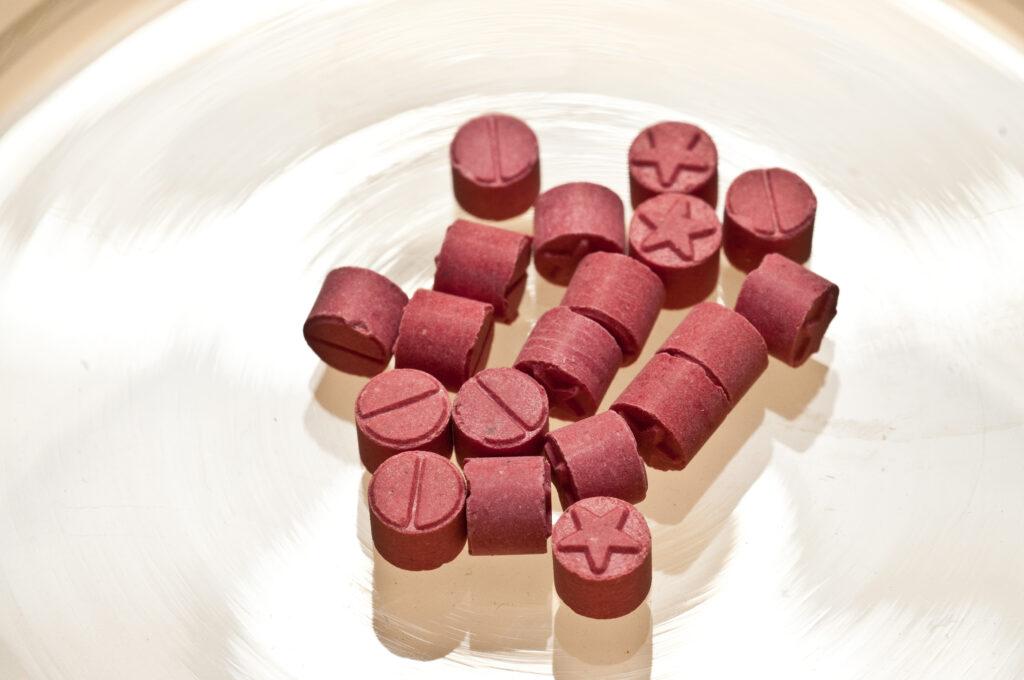
The term “MDMA” is the official scientific name for the drug, while the word “ecstasy” is commonly used to refer to MDMA in pill or tablet form, and “molly” is often used to refer to MDMA in its pure crystalline powder form. However, all three terms are often used interchangeably to refer to the drug regardless of its structure.
MDMA produces various effects, including increased energy, heightened empathy and connectedness to others, enhanced sensory perception, and euphoria. However, MDMA/ecstasy/molly can carry potential risks and side effects, including dehydration, overheating, serotonin syndrome, and neurotoxicity. Long-term use can also lead to depression, anxiety, and other mental health problems.
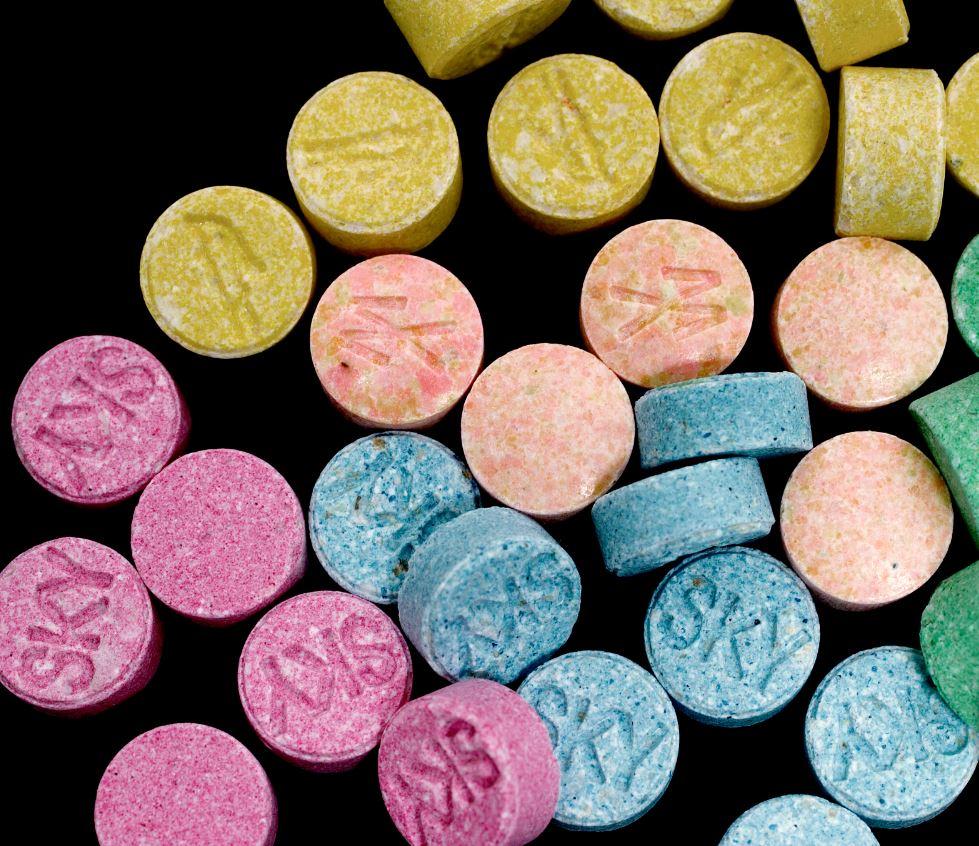
Skip To:
Learn More:
- What is Ketamine? Special K Drug, Street Names & Side Effects
- DMT Tripping, What Is It Like & What Are The Risks?
- Smoking Salvia, Use, Effects, Risks, and Treatment
- What is Mescaline? Effects, Risks & Treatment
- Club Drugs, Everything You Need To Know
- Long Term Effects of MDMA
- How To Get Unhigh Fast? Sobering Up From Weeds & Drug Abuse.
- What is Molly Addiction?
- DMT Drug Pics, What Does DMT Look Like? DMT Images.
- Long-Term Effects Of LSD
Definition of Hallucinogens Drug Facts
Definition of Hallucinogenic Drugs
The hallucinogens psychology definition, or psychedelics, is a class of psychoactive substances that can cause profound alterations in a person’s perception, thoughts, and feelings.
These drugs can produce sensory experiences that seem real but are not based on reality. They can also change the mood, thought patterns, and sensory perception. Examples of hallucinogenic drugs include LSD, psilocybin mushrooms, mescaline, and DMT. The hallucinogenic meaning and the effects of these drugs can vary depending on the specific drug, the dose taken, the individual’s physiology, and the setting in which the drug is used.
Hallucinogens Effects on Brain
Hallucinogenic substances can profoundly affect the brain, altering a person’s perception, mood, and thought patterns. These effects are primarily due to the substances’ ability to interact with particular brain receptors, such as the serotonin 2A receptor. When a hallucinogenic substance is ingested, it can lead to changes in the activity and connectivity of various brain regions, including those involved in perception, mood regulation, and self-awareness. These changes can result in the following:
- Altered sensory experiences.
- Seeing vivid colors or patterns.
- Feeling a sense of unity with one’s surroundings or other people.
- Experiencing a distorted sense of time.
- Depending on the specific substance and individual factors, hallucinogens can also affect mood, producing euphoria, anxiety, or paranoia.
- Some substances can change thought patterns, such as an altered sense of self or a heightened sense of spirituality.
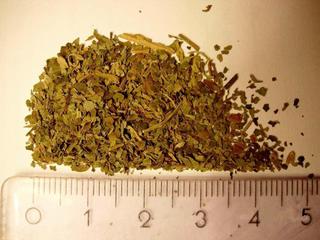
Is Weed Hallucinogenic?
Is weed a hallucinogenic drug? While some people may experience mild perceptual changes or altered sensory experiences after using marijuana (also known as weed or cannabis), it is generally not considered hallucinogenic. The primary psychoactive compound in marijuana is THC (tetrahydrocannabinol), which primarily interacts with the cannabinoid receptors in the brain rather than the serotonin receptors that are more commonly associated with hallucinogenic effects.
However, marijuana can still significantly affect the brain and behavior, including mood, perception, and cognition changes. Depending on the dose, potency, and individual factors, these effects can vary and may be more pronounced in some people than others.
Moreover, some strains of marijuana or cannabis products may be specifically bred or formulated to contain higher levels of THC or other compounds that can produce more pronounced perceptual or sensory changes. Nevertheless, even in these cases, marijuana is generally not considered hallucinogenic.
Some evidence suggests that marijuana use may be linked to an increased risk of psychosis, particularly in individuals who are already at risk for developing psychotic disorders or have a history of such conditions in their family.
Hallucinogens Legality
Many hallucinogens are Schedule 1 under the Controlled Substances Act, indicating a high potential for substance use disorders, no currently accepted medical use in treatment in the US, and a lack of acknowledged safety for use under medical supervision.
Scientists and medical professionals are actively researching the hallucinogens drugs list and substances to understand better their effects on the brain and their potential therapeutic uses. Research in this area and the effects of hallucinogens on gene expression have been ongoing for several decades. For instance, recent studies have shown promising results in using psilocybin to treat mental health conditions such as depression, anxiety, and addiction.
Some studies have also investigated the potential use of these substances to enhance creativity, increase spirituality, and improve well-being in healthy individuals.
However, while these substances may have potential therapeutic benefits, they can also have significant risks, mainly when used in uncontrolled or unsupervised settings. Researchers continue to study these substances to understand their effects better and to develop safe and effective treatment approaches.
Hallucinogenic Plants
When ingested or consumed, many hallucinogenic herbs contain naturally occurring compounds that can produce hallucinogenic effects. In our vast wild land, which of these spices is considered a hallucinogenic? And what are the most potent hallucinogens? Some of the most well-known natural plant hallucinogens examples include the following:
- Psilocybin Mushrooms: The top of this hallucinogens list is “magic mushroom.” The Psilocybe genus contains psilocybin and psilocin, which can produce vivid sensory experiences and altered states of consciousness.
- Peyote Cactus: The peyote cactus contains mescaline, which can produce hallucinations and altered sensory experiences. Peyote plants have more mescaline by weight than San Pedro cactus hallucinogenic properties.
- Ayahuasca Vine: Ayahuasca is a plant mixture used in traditional South American shamanic practices that contain the hallucinogenic compound DMT (dimethyltryptamine).
- Salvia Divinorum: This plant contains salvinorin A, which can produce intense and often unsettling salvia hallucinogenic effects, hallucinations, and sensory distortions.
- Datura: Plants in the Datura genus contain tropane alkaloids like hyoscyamine and scopolamine, which can produce datura hallucinogenic effects, delirium, and other psychoactive effects.
The following hallucinogens natural plants are not widely known as substances of abuse but can also have potent hallucinogenic effects. Nevertheless, other plants in this list are still under study. Some of the hallucinogenic flowers and their products are the following:
- Angel Trumpet Hallucinogenic Effects.
- Angel’s trumpet (also known as Brugmansia) contains several alkaloids that can produce psychoactive effects, including hallucinations and delirium. These alkaloids, which include scopolamine, hyoscyamine, and atropine, can produce intense sensory distortions and altered states of consciousness when ingested or otherwise consumed. The effects of an angel’s trumpet can be unpredictable and potentially dangerous, mainly when consumed in high doses or without proper preparation. Ingesting the plant can cause symptoms such as dilated pupils, dry mouth, increased heart rate, confusion, agitation, severe cases, seizures, coma, or death.
- Nutmeg Hallucinogenic Effects.
- Nutmeg is sometimes cited as a potential hallucinogenic, as it has myristicin, structurally similar to other hallucinogenic compounds like mescaline and MDMA. However, while nutmeg can produce psychoactive effects, these effects are generally not considered true hallucinations. When consumed in large doses, nutmeg can have various symptoms, including dizziness, nausea, confusion, and an altered sense of time perception.
- Mugwort Hallucinogenic Effects.
- Mugwort (Artemisia vulgaris) is a plant used for centuries in traditional medicine and cultural practices, particularly in Asia and Europe. While some believe that mugwort has hallucinogenic properties, limited scientific evidence supports this claim.
The following are not included on the hallucinogenic plants list, but many people search for their hallucinogenic effects. This list of hallucinogenic plants and natural hallucinogenic substances is still being researched.
- Many look for hallucinogenic spinach effects, but no evidence suggests that spinach (or any other typical food) has hallucinogenic properties. The culprit of this trend is tainting spinach with weeds.
- “Cow pasture hallucinogenic mushroom” is a colloquial term that refers to several species of mushrooms commonly found growing in fields and pastures, including the Psilocybe Cubensis mushroom. Psilocybe Cubensis is a well-known hallucinogenic mushroom with psychoactive psilocybin and psilocin compounds, which can produce intense hallucinations and transitioned states of consciousness when ingested.
- There are also reported cases of hallucinogenic honey from the Himalayas. Hallucinogenic honey, or “mad honey,” contains grayanotoxins, neurotoxic substances produced by certain plants, including the rhododendron species. When bees collect nectar from these plants, the grayanotoxins can be transferred to the honey, making psychoactive effects in humans when consumed in large enough quantities.
- Mad honey is produced in several regions worldwide, including Nepal, where it is known as “Gurung honey” or “red honey.” In some parts of Nepal, Gurung honey is used for medicinal purposes and is believed to have therapeutic properties for various health conditions.
- Furthermore, several species of hallucinogenic frogs are known to produce psychoactive compounds, some of which can have hallucinations and altered states of consciousness in humans.
Hallucinogens Meaning & Hallucinogens Examples Drug Fact Sheet
This list of hallucinogens is publicly made available by the DEA (Drug Enforcement Administration) for substance use disorder awareness and to define hallucinogenic drugs. Download the below sheet for more information about types of hallucinogenic drugs.

Get Your Life Back
Find Hope & Recovery. Get Safe Comfortable Detox, Addiction Rehab & Dual Diagnosis High-Quality Care.
Hotline(844) 597-1011Hallucinogens Long Term Effects & Statistics
Some research has suggested that long-term hallucinogen use may increase the risk of mood and anxiety disorders, such as depression and PTSD, especially in individuals with a pre-existing vulnerability to these conditions.
The National Institute of Health supported the survey and found the following hallucinogens use statistics. Participants’ hallucinogen types included LSD, MDMA, mescaline, peyote, “shrooms” or psilocybin, and PCP. The only hallucinogen measured that remarkably declined in use was MDMA, showing statistically massive declines within one year and the past five years – from 5 percent in 2016 and 2020 to 3 percent in 2021. [3]
5.5 Million
Roughly 5.5+ million people in the US used hallucinogens in 2019.
Source: NCBI
19-30
Cannabis and hallucinogen use in the past year reported by the young population 19 to 30 increased significantly in 2021.
Source: NCBI
8%
Before 2020 hallucinogen use had been relatively unmoving over the past few decades. However, in 2021, 8 percent of young adults reported past-year hallucinogen use, depicting an all-time high since the category was first studied and surveyed in 1988.
Source: NIDA
Get Help. Get Better. Get Your Life Back.
Searching for Accredited Drug and Alcohol Rehab Centers Near You?
Even if you have failed previously and relapsed, or are in the middle of a difficult crisis, we stand ready to support you. Our trusted behavioral health specialists will not give up on you. When you feel ready or just want someone to speak to about therapy alternatives to change your life call us. Even if we cannot assist you, we will lead you to wherever you can get support. There is no obligation. Call our hotline today.
(844) 597-1011Long Term Effects of Hallucinogenic Mushrooms
As with any substance, the potential risks and benefits of using psilocybin mushrooms should be carefully considered before use. It is also crucial to use caution when using hallucinogens and to only use them in a safe and controlled environment with a trusted support system. Most hallucinogens are illegal without research approval by the FDA and DEA.
Magic shrooms are considered prevalent in the US. Millions of US citizens have used shrooms. However, hallucinogenic mushrooms are illegal in most countries, including the United States, and can be associated with potential risks and adverse effects. Like other hallucinogenic fungi examples, the long-term effects of using psilocybin mushrooms are not fully understood. They can vary based on the individual, frequency, duration of use, and other factors. Here are some potential long-term effects of using “mushrooms hallucinogens.”
- Persisting Perception Disorder (PPD): As with other hallucinogens, some individuals may experience ongoing visual disturbances, such as seeing halos around objects or flashing lights, even after stopping using psilocybin mushrooms. This condition is known as PPD and can be distressing for those who experience it.
- HPPD (Hallucinogen Persisting Perception Disorder): HPPD is a condition where individuals continue to experience perceptual disturbances, such as seeing flashes of colors or distortions of objects, even after they have stopped using hallucinogens. While rare, HPPD can be chronic and debilitating for those who experience it.
- Flashbacks: Like other hallucinogens, individuals who use psilocybin mushrooms may experience flashbacks or sudden recurrences of the effects of the hallucinogen, even after they have stopped using it. These flashbacks can be triggered by stress, exercise, or other factors and can be distressing for those who experience them.
- Psychological Distress: Some research has suggested that psilocybin mushrooms may increase the risk of psychological distress, such as anxiety or panic attacks, especially in individuals with a pre-existing vulnerability to these conditions.
- Improved Well-Being: While there are potential risks associated with psilocybin mushrooms, some research has also suggested that they may have therapeutic benefits, such as improving mood, reducing anxiety and depression, and increasing feelings of well-being. More research is required to fully comprehend the therapeutic potential of psilocybin mushrooms and how they can be used safely and effectively.
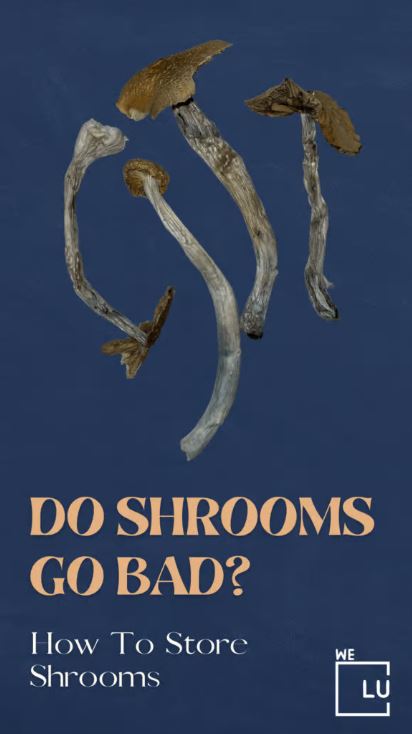
Physical Effects of Shrooms Infographics
The physical effects of psilocybin mushrooms can vary based on the individual, dose, and other factors. Embed the “Physical Health Effects of Shrooms” Infographic below to your website. This infographic is provided by the We Level Up addiction treatment center team. To use the above infographics, you agree to link back and attribute its source and owner at https://welevelup.com/addiction/hallucinogens/
Hallucinogenic mushroom images link: https://welevelup.com/wp-content/uploads/2023/04/Physical-Health-Effects-of-Shrooms-1024×1024.jpg
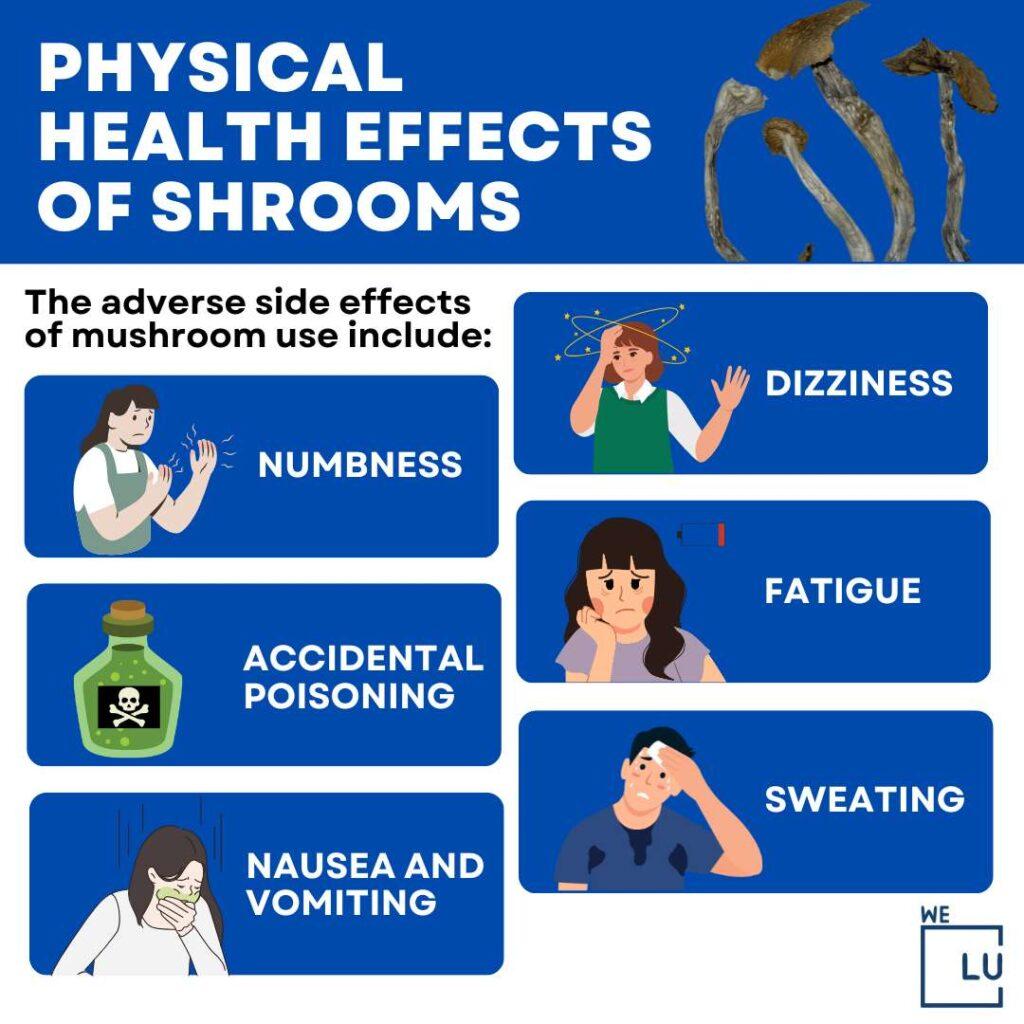
Hallucinogenic Absinthe
The alleged “Absinthe hallucinogenic” is a high-proof alcoholic beverage traditionally made with wormwood (Artemisia absinthium) and other botanicals. Wormwood contains a compound called thujone, which is believed to have psychoactive effects and has been associated with hallucinations and other altered states of consciousness.
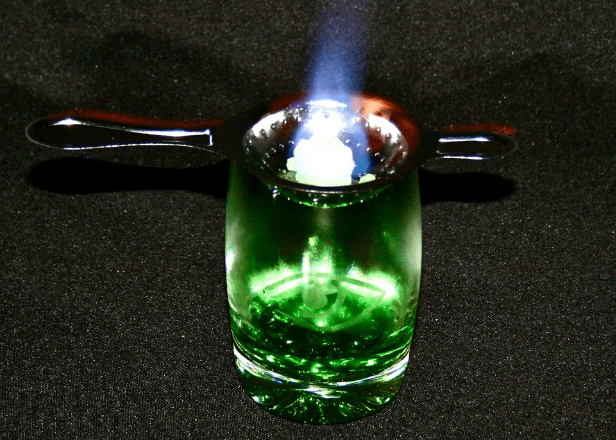
However, using absinthe as a hallucinogenic beverage has been controversial and largely unsubstantiated. The psychoactive effects of absinthe are generally attributed to the high alcohol content rather than the presence of thujone or other botanicals.
Moreover, the consumption of absinthe has been associated with potential health risks, such as liver damage, seizures, and addiction, especially when consumed in excess. Absinthe was banned in many places, including the United States and several European countries, in the early 20th century due to concerns over its safety and alleged hallucinogenic effects.
In recent years, absinthe has been legalized in many countries, including the United States, under certain conditions, such as limiting the thujone content and regulating the production and distribution of the beverage. However, it is crucial to use caution and to consume absinthe in moderation, as with any alcoholic beverage, and to be aware of the potential risks and adverse effects associated with its use.
Natural Hallucinogens Examples and Effects
Many traditional and modern tea hallucinogenics are made by brewing or infusing plant materials in hot water, creating a tea-like beverage. However, hallucinogenic drinks can have potential risks and adverse effects, such as psychological distress, physical effects, and legal issues. The effects of hallucinogenic teas can vary widely based on the individual, dose, and other factors and can be unpredictable.
There are several natural “examples hallucinogens” found in plants, fungi, and other sources that can produce altered states of consciousness and other effects. Furthermore, there are many hallucinogenic mushroom strains, each with unique effects and characteristics. Here are a few common strains of hallucinogenic mushrooms:
- Psilocybe Cubensis: This type of mushroom is one of the most common strains of hallucinogenic mushrooms, known for its ease of cultivation and solid psychoactive effects. It is typically found in warm, humid climates and has a distinctive golden-brown cap.
- Psilocybe Semilanceata: Psilocybe Semilanceata, also known as the liberty cap, is a small, cone-shaped mushroom found in grassy areas throughout North America and Europe. It is known for its potent psychoactive effects and is often used in traditional spiritual practices.
- Psilocybe Cyanescens: Psilocybe Cyanescens is another potent strain of hallucinogenic mushroom that is found in the Pacific Northwest region of the United States. It is known for its solid psychoactive effects and distinctive blue-staining reaction when bruised.
- Psilocybe Baeocystis: Psilocybe Baeocystis is a strain of hallucinogenic mushrooms that are found in the Pacific Northwest region of the United States. It is known for its large, dense caps and potent psychoactive effects.
- Psilocybe Azurescens: Psilocybe Azurescens is a potent strain of hallucinogenic mushrooms that are found in the Pacific Northwest region of the United States. It is known for its solid psychoactive effects and large, caramel-colored caps.
Many interested in studying hallucinogens sought the “Hallucinogenic Plants Golden Guide” book. The “Golden Guide to Hallucinogenic Plants” is a book by Richard Evans Schultes published in 1976. “A Golden Guide to Hallucinogenic Plants” book provides information on the use of various hallucinogenic plants, their cultural significance, and their effects on the human body and mind. It includes illustrations and photographs of the plants and their traditional use.
While the book “A Golden Guide Hallucinogenic Plants” may contain valuable information on hallucinogenic plants, using these plants can be illegal and potentially dangerous. Prioritizing safety and seeking professional guidance before engaging in any activities related to hallucinogenic plants is essential. Moreover, the book may need to be updated and reflect current scientific or cultural knowledge.
First-class Facilities & Amenities
World-class High-Quality Addiction & Mental Health Rehabilitation Treatment
Rehab Centers TourRenowned Addiction Centers. Serene Private Facilities. Inpatient rehab programs vary.
Addiction Helpline(844) 597-1011Proven recovery success experience, backed by a Team w/ History of:
15+
Years of Unified Experience
100s
5-Star Reviews Across Our Centers
10K
Recovery Success Stories Across Our Network
- Low Patient to Therapist Ratio
- Onsite Medical Detox Center
- Comprehensive Dual-Diagnosis Treatment
- Complimentary Family & Alumni Programs
- Coaching, Recovery & Personal Development Events
Hallucinogens Short Term and Long Term Effects
The effects of hallucinogens can vary widely based on the individual, dose, and other factors and can be unpredictable. It is also recommended to be aware of the potential risks and adverse hallucinogens effects on brain and to seek professional guidance and support if needed.
Adverse effects of hallucinogens include the following:
- Psychological Distress: Hallucinogens can cause intense psychological effects such as anxiety, paranoia, and confusion, leading to psychological distress and psychological disorders in some individuals.
- Physical Effects: Hallucinogens can cause various biological effects, such as nausea, vomiting, increased heart rate, and high blood pressure.
- Risky Behaviors: Hallucinogens can impair judgment and decision-making, leading some individuals to engage in risky behaviors such as driving under the influence or unsafe sexual practices.
Short Term Effects of Hallucinogens
The hallucinogens short term effects can vary based on the specific substance used, the dose, and the individual’s physical and mental state. However, some common short-term effects of hallucinogens include the following:
- Altered sensory perception.
- Emotional change.
- Cognitive changes.
- Synesthesia: Some individuals may experience synesthesia, a condition in which sensory information is perceived unusually, such as hearing colors or seeing sounds.
Long-Term Effects of Hallucinogens Brainly
Hallucinogens can have long-term effects on the brain that may take years, including the following long term effects of hallucinogens brainly:
- Persisting Perception Disorder (HPPD): Some individuals who use hallucinogens may experience ongoing perceptual changes or visual disturbances, even after the effects of the drug have worn off. This condition is known as HPPD and can last for a few days, months, or even years after using hallucinogens.
- Mood Disorders: Long-term use of hallucinogens may increase the risk of developing mood disorders such as depression or anxiety, particularly in individuals with a history of mental health conditions.
- Flashbacks: Some individuals may experience flashbacks or recurring visual or perceptual experiences similar to those experienced while under hallucinogens. Flashbacks can occur spontaneously and may be triggered by stress, anxiety, or other factors.
- Cognitive Function: Some evidence suggests that long-term use of hallucinogens may impair cognitive function, particularly in areas such as memory and attention.
- Addiction: Although hallucinogens are not typically considered addictive in the same way as drugs such as opioids or cocaine, some individuals may develop a psychological dependence on the drugs, leading to continued use despite negative consequences.
Hallucinogens Effects on the Body
Hallucinogens can affect the body, including short-term and long-term effects. Some common effects of hallucinogens on the body include the following:
- Increased Heart Rate and Blood Pressure: Many hallucinogens can cause heightened or rapid heart rate, harming people with underlying cardiovascular conditions.
- Nausea and Vomiting: Some hallucinogens can cause nausea and vomiting, particularly at higher doses.
- Dilated Pupils: Hallucinogens can cause the pupils to become enlarged, leading to increased sensitivity to light and blurred vision.
- Muscle Weakness and Coordination Difficulties: Some hallucinogens can cause muscle weakness and problems with coordination, which can increase the risk of falls or other accidents.
- Seizures: In rare cases, hallucinogens can trigger seizures, particularly in individuals already prone to seizures.
Misusing Hallucinogenic Drug Symptoms
Misusing hallucinogenic drugs can cause a range of physical and psychological symptoms. Some common misusing hallucinogens symptoms include the following:
- Visual and Auditory Hallucinations: Hallucinogenic drugs can cause vivid and sometimes frightening hallucinations, which can be difficult to distinguish from reality.
- Distorted Perception of Time and Space: Many hallucinogens can cause an altered perception of time and space, which can be disorienting and confusing.
- Mood Changes: Hallucinogens can cause rapid and unpredictable changes in mood, including euphoria, anxiety, or depression.
- Paranoia and Anxiety: Some individuals may experience paranoia or intense anxiety while under hallucinogens.
- Disordered Thinking and Behavior: Hallucinogens can cause disordered thinking and behavior, leading to actions that are out of character or dangerous.
- Increased Heart Rate and Blood Pressure: Misusing hallucinogens can cause an increase in heart rate, causing high blood pressure, which can harm people with underlying cardiovascular conditions.
- Nausea and Vomiting: Some hallucinogens can cause nausea and vomiting, particularly at higher doses.
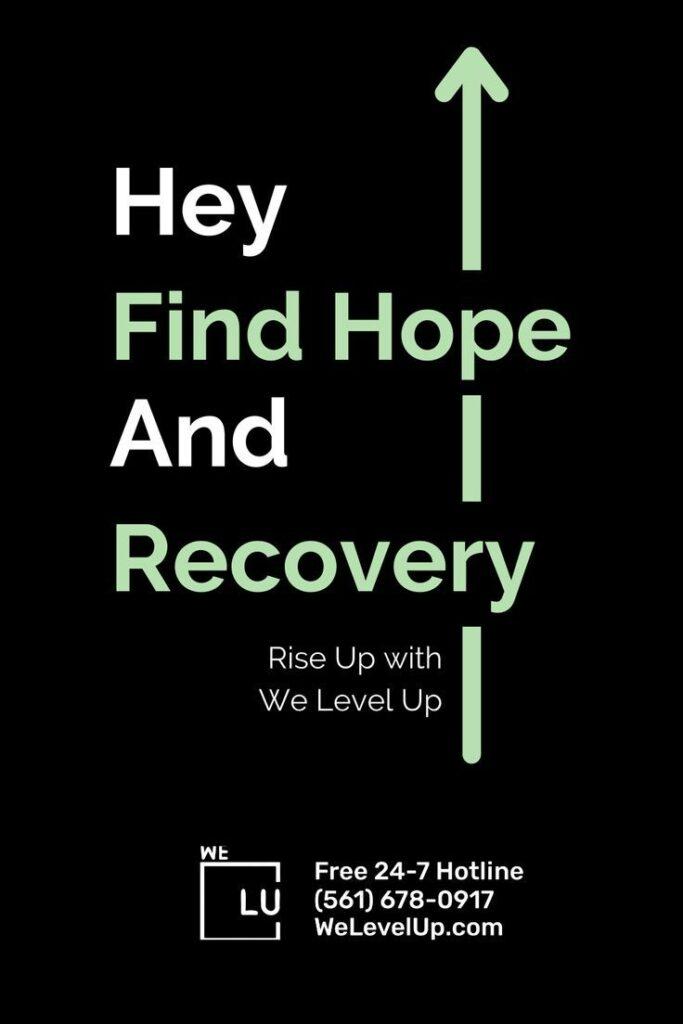
It is generally believed that hallucinogens do not cause physical dependency, meaning that the body does not develop a physical need or craving for the drug. Unlike opioids or alcohol, which can lead to physical dependence with regular use, hallucinogens do not produce physical withdrawal symptoms when use is discontinued.
However, hallucinogens can still lead to psychological dependence. Some individuals may become attached to the feelings of euphoria, insight, or escape those hallucinogens can produce and may continue to seek out these experiences despite adverse consequences or risks. Moreover, repeated use of hallucinogens can cause tolerance, meaning higher drug doses are needed to achieve the same effects. This can lead to a cycle of increasing use and potential harm. Seek professional help if you or someone you’re concerned with is struggling with drug use.
Treatment for Hallucinogen Addiction
The treatment for hallucinogen use should be individualized and tailored to the particular requirements and needs of the individual. The first step in developing an effective treatment plan is seeking professional help from a qualified healthcare provider or addiction specialist. The treatment for hallucinogen use depends on the individual’s needs and the severity of their use. Some options for treatment may include the following:
- Behavioral Therapy: Behavioral and psychotherapy, such as cognitive-behavioral therapy (CBT), can help people to recognize and change negative patterns of thinking and behavior related to drug use. This type of talk therapy can be sufficient in helping individuals to manage cravings and avoid relapse.
- Support Groups: Support groups, such as 12-step programs, can provide individuals with a supportive and understanding community of peers recovering from drug use.
- Medication-Assisted Treatment: While no medications are approved explicitly for treating hallucinogen use disorder, some medications may be used to manage symptoms such as anxiety or depression contributing to drug use.
- Residential Rehab Treatment: In severe cases of a hallucinogen use disorder, residential treatment in a specialized facility may be necessary. This can provide individuals with intensive therapy and support in a controlled environment.
One reason to get help for being addicted to hallucinogenic drugs immediately is that it does not take years of chronic misuse to incur the most severe psychological consequences. No matter how small or infrequent, every use puts your mind, and inherently, your life, at risk.
Get FREE addiction treatment insurance check – https://welevelup.com/rehab-insurance/ If you or a loved one is struggling with hallucinogenic substance addiction or other substance use disorder(s), call for a FREE consultation 24/7 at (561) 678-0917.
World-class, Accredited, 5-Star Reviewed, Effective Addiction & Mental Health Programs. Complete Behavioral Health Inpatient Rehab, Detox plus Co-occuring Disorders Therapy.
CALL(844) 597-1011End the Addiction Pain. End the Emotional Rollercoaster. Get Your Life Back. Start Drug, Alcohol & Dual Diagnosis Mental Health Treatment Now. Get Free No-obligation Guidance by Substance Abuse Specialists Who Understand Addiction & Mental Health Recovery & Know How to Help.
Top 10 What is Hallucinogenic Drug? FAQs
-
What are the effects of hallucinogens?
Hallucinogens are psychoactive drugs that can cause significant changes in a person’s perception, mood, and thought processes. The effects of hallucinogens can vary based on the specific substance used, the dosage, and the individual’s physical and mental state.
-
What is hallucinogens?
The definition hallucinogens, known as psychedelics, work by affecting the brain’s serotonin system, which is involved in regulating mood, perception, and other cognitive functions. Hallucinogens can cause a person to experience altered states of consciousness, including changes in sensory perception, thought patterns, and emotional states.
-
How are hallucinogens taken?
Using hallucinogens through ingestion, smoking, inhalation, and injection can be dangerous and potentially harmful and can lead to long-term psychological effects or even psychosis in some cases. Prioritizing safety and seeking professional guidance before engaging in hallucinogens-related activities is essential. Moreover, using hallucinogens is illegal in many parts of the world and the US.
-
Are mushrooms hallucinogenic?
Yes, certain types of mushrooms can be hallucinogenic. Psilocybin mushrooms, also known as “magic mushrooms,” contain the psychoactive compound psilocybin, which can cause significant changes in perception, mood, and thought processes.
-
Are there any legal hallucinogens in New York?
No legal hallucinogens are specifically authorized for use or possession in New York. The use, possession, and distribution of most hallucinogens, including LSD, psilocybin mushrooms, and DMT, are illegal under state and federal law. However, there is ongoing research into the potential therapeutic uses of certain hallucinogens, such as psilocybin, for conditions such as depression, anxiety, and addiction. Some research institutions may be authorized to use hallucinogens in clinical research, subject to strict regulation and oversight.
-
Which symptom is characteristic of someone on a hallucinogenic drug?
The effects of hallucinogens can vary widely and unpredictably, and some people may react negatively to these substances.
-
How to define hallucinogens?
Hallucinogens definition psychology defines hallucinogenic drugs as a class of psychoactive drugs that can cause significant changes in perception, mood, thought processes, and sensory experiences. These substances alter the brain’s functioning and can cause the user to perceive things distorted or altered, often leading to hallucinations or other changes in sensory perception.
-
Is “Hallucinogenic Plants a Golden Guide” still available?
The original publication of “Hallucinogenic Plants: A Golden Guide” by Richard Evans Schultes is no longer in print and can be challenging to find in physical form. However, some used book copies may be available through online marketplaces or secondhand bookstores.
-
Can you grow hallucinogenic plants in your backyard?
It is possible to grow some hallucinogenic plants in your backyard. Still, the cultivation and possession of many of these plants may be illegal in many parts of the world. Moreover, growing hallucinogenic plants can be dangerous and potentially harmful, leading to legal consequences if not done responsibly.
-
What is the meaning of the Hallucinogenic Toreador?
“The Hallucinogenic Toreador” is a painting by Salvador Dali, completed in 1970. The painting is part of a series of artworks that Dali created in his later years, characterized by their vivid, dreamlike quality and surreal imagery. The meaning of “The Hallucinogenic Toreador” is open to interpretation and can be difficult to discern. However, some art historians and critics have suggested that the painting may reflect Dali’s fascination with death, sex, and violence. The image of the toreador, a bullfighter, is a common motif in Dali’s works and is often associated with themes of masculinity and domination.
Angel Dust Drug. What is PCP Drug? PCP Effects, Angel Dust Drugs Hazards & Treatment Options.
Angel Dust is the slang name for phencyclidine (PCP), a powerful sedative and hallucinogen. Its effects include disorientation, hallucinations, loss of coordination, agitation, and increased body temperature and heart rate. If you or someone you’re concerned with is experiencing any Angel Dust effects, please seek medical help immediately.
Angel Dust Drug Video Transcript
The hallucinogen phencyclidine or PCP drug can be smoked as “fry” or marijuana cigarettes mixed with the narcotic angel dust. It is a white crystal powder. The adverse effects of angel dust medications can range greatly from sensory alterations to schizophrenic-like behavior to stroke, anxiety, and depression, and the consequences of angel dust are unexpected.
What is angel dust? According to the US Food and Drug Administration (FDA), Angel dust is prohibited. The Controlled Substances Act classifies angel dust as a substance in Schedule II. Meth and cocaine are the substances under schedule II most susceptible to abuse. Because of this, using these medicines excessively might cause significant physical or mental dependence.
People of various ages use Angel dust medications. An estimated 6 million Americans aged 12 and older have used PCP or angel dust at least once in their lives, according to the US Drug Enforcement Agency (DEA). The survey also showed that many teenagers and young adults use this substance; over 225,000 people in these age groups used it at least once, as did 777,000 people in the 18–25 age range.
What are the Street Names of Angel Dust Drugs?
There are numerous street names for the substance known as angel dust or PCP, including:
- Hog.
- Amoeba.
- “STP.”
- Super Grass.
- Zoom.
- Belladonna.
- Peace Pills.
- Boat.
- Ozone.
- Animal Trank.
- Sherm Sticks.
- Embalming Fluid.
- Angel Dust: The Drug That Turns You Into a Zombie.
Drugs that cause mental alterations include angel dust. This indicates that angel dust medications alter behavior, mood, and how users interact with others and their environment by acting on the brain (central nervous system). Angel dust medications are thought by experts at the National Institutes of Health (NIH) to interfere with some brain chemicals’ regular functions.
Drugs named angel dust fall within the category of hallucinogens. These are drugs that can make you hallucinate. These are perceptions that you have when you are awake that seem genuine but are the product of your imagination.
A dissociative substance is frequently referred to as angel dust or PCP. The drug user experiences a sense of disconnection from their body and environment. You may have the following side effects after using this medication:
- You are floating and disconnected from reality.
- Euphoria, or rush, and less inhibition, similar to being drunk on alcohol.
- Your sense of thinking is clear; you have superhuman strength and aren’t afraid of anything.
Experience Transformative Recovery at We Level Up Treatment Centers.
See our authentic success stories. Get inspired. Get the help you deserve.
Start a New Life
Begin with a free call to an addiction & behavioral health treatment advisor. Learn more about our dual-diagnosis programs. The We Level Up Treatment Center Network delivers recovery programs that vary by each treatment facility. Call to learn more.
- Personalized Care
- Caring Accountable Staff
- World-class Amenities
- Licensed & Accredited
- Renowned w/ 100s 5-Star Reviews
We’ll Call You
Search We Level Up Hallucinogens Detox, Mental Health Topics & Resources
Sources
[1] Hallucinogens Drug Fact Sheet – Department of Justice / Drug Enforcement Administration (DEA)
[2] N, N-DIMETHYLTRYPTAMINE (DMT) – Drug Enforcement Administration (DEA)
[3] NIDA. 2022, August 22. Marijuana and hallucinogen use among young adults reached a time-high in 2021. Retrieved from https://nida.nih.gov/news-events/news-releases/2022/08/marijuana-and-hallucinogen-use-among-young-adults-reached-all-time-high-in-2021 on 2023, April 24
[4] Dos Santos RG, Bouso JC, Rocha JM, Rossi GN, Hallak JE. The Use of Classic Hallucinogens/Psychedelics in a Therapeutic Context: Healthcare Policy Opportunities and Challenges. Risk Manag Healthc Policy. 2021 Mar 5;14:901-910. DOI: 10.2147/RMHP.S300656. PMID: 33707976; PMCID: PMC7943545.
[5] Psychedelic and Dissociative Drugs – National Institute on Drug Abuse (NIDA)
[6] Lowe H, Toyang N, Steele B, Valentine H, Grant J, Ali A, Ngwa W, Gordon L. The Therapeutic Potential of Psilocybin. Molecules. 2021 May 15;26(10):2948. DOI: 10.3390/molecules26102948. PMID: 34063505; PMCID: PMC8156539.
[7] Daniel J, Haberman M. Clinical potential of psilocybin as a treatment for mental health conditions. Ment Health Clin. 2018 Mar 23;7(1):24-28. DOI: 10.9740/mhc.2017.01.024. PMID: 29955494; PMCID: PMC6007659.
[8] Dinis-Oliveira RJ, Pereira CL, da Silva DD. Pharmacokinetic and Pharmacodynamic Aspects of Peyote and Mescaline: Clinical and Forensic Repercussions. Curr Mol Pharmacol. 2019;12(3):184-194. DOI: 10.2174/1874467211666181010154139. PMID: 30318013; PMCID: PMC6864602.
[9] Hwang KAJ, Saadabadi A. Lysergic Acid Diethylamide (LSD) [Updated 2022 Jul 11]. In: StatPearls [Internet]. Treasure Island (FL): StatPearls Publishing; 2023 Jan-. Available from: https://www.ncbi.nlm.nih.gov/books/NBK482407/
[10] Liechti ME. Modern Clinical Research on LSD. Neuropsychopharmacology. 2017 Oct;42(11):2114-2127. DOI: 10.1038/npp.2017.86. Epub 2017 Apr 27. PMID: 28447622; PMCID: PMC5603820.


